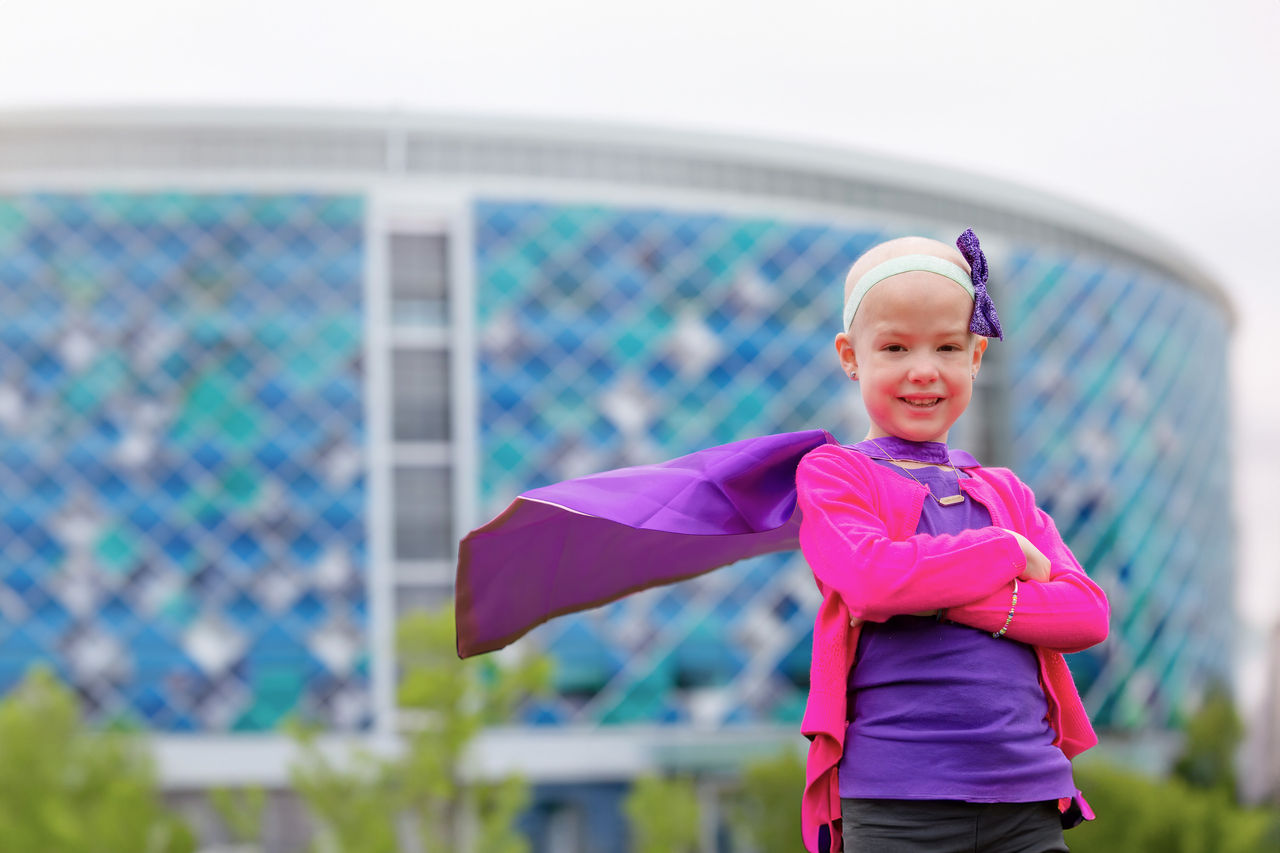Biostatistics Program
- About Us
- Our Services
- Interests & Impact
Unlocking Better Health for Children
The Biostatistics Program at Nemours Children’s uses the power of statistics and data science to shed new light on childhood illness. We provide research insights that ultimately help children live healthier lives.
Staffed by four full-time biostatisticians, we collaborate with researchers within and outside of Nemours who seek to understand how conditions like obesity, asthma, cancer, diabetes and other health conditions that affect children.
Our team ensures innovative application of statistical, data science and machine learning approaches to track how health and growth outcomes change over time, recognize different subgroups, identify risk factors and predict the best interventions for disease. We uncover patterns that may lead to breakthrough treatments and preventive measures to improve health outcomes.
From study design to data processing to identifying results that matter, our team helps researchers find life-changing therapies for kids.
Our Leadership

Md Jobayer Hossain, PhD <<NEED HEADSHOT
Senior Research Scientist
Director, Biostatistics Program
Professor (Research) in Pediatrics, Sydney Kimmel Medical College, Thomas Jefferson University
Related Research & Care at Nemours <FPO TAGS coming>
Research collaboration at Nemours is critical for solving complex issues for our patients and families, advancing scientific knowledge and fostering innovation across the industry. Our team works closely with the following research centers, labs, areas and cores.
Biomedical Research Informatics Center
RESEARCH CENTER
One or two sentence overview here. To come. One to two sentence overview. To come.
Center for Endocrinology, Diabetes & Metabolic Disorders
RESEARCH CENTER
One or two sentence overview here. To come. One to two sentence overview. To come.
Center for Pediatric Lung Research
RESEARCH CENTER
One or two sentence overview here. To come. One to two sentence overview. To come.
Center for Cardiac Research & Innovation
RESEARCH CENTER
One or two sentence overview here. To come. One to two sentence overview. To come.
Motor Neuron Diseases Research Lab
RESEARCH LAB
One or two sentence overview here. To come. One to two sentence overview. To come.
Obesity & Cardiovascular Research Lab
RESEARCH LAB
One or two sentence overview here. To come. One to two sentence overview. To come.
Perinatal & Pulmonology Translational Research Lab
RESEARCH LAB
One or two sentence overview here. To come. One to two sentence overview. To come.
Cancer Research
RESEARCH LAB
One or two sentence overview here. To come. One to two sentence overview. To come.
Cardiac Research
RESEARCH AREA
One or two sentence overview here. To come. One to two sentence overview. To come.
Critical Care Research
RESEARCH AREA
One or two sentence overview here. To come. One to two sentence overview. To come.
Endocrinology, Growth & Metabolism Research
RESEARCH AREA
One or two sentence overview here. To come. One to two sentence overview. To come.
Hematology Research
RESEARCH AREA
One or two sentence overview here. To come. One to two sentence overview. To come.
Pulmonology Research
RESEARCH AREA
One or two sentence overview here. To come. One to two sentence overview. To come.
Expert Statistical Support for Pediatric Research
The Biostatistics Program provides complete statistical support throughout the research lifecycle, from initial study design to final publication. Our experienced team offers expertise in advanced statistical methods, data science approaches, and analytical software to help researchers achieve study objectives and advance pediatric medicine. Here’s how we help.
Study Design & Study Conduct
- Study design
- Hypothesis and aim formulation
- Variable selection
- Sample size calculation
- Analysis plan development
- Randomization procedures
- Interim analyses
- Safety monitoring
- Data collection planning
Data Processing & Analysis
- Data processing and validation
- Variable derivation
- Data analysis
- Model fitting
- Data mining, pattern recognition and classification
Research Dissemination Support
- Authorship of statistical methods and results sections
- Outline and interpret results for abstract, manuscript and presentation
Training & Instruction
- Statistical design, data processing and analysis
- Analytical software training (SAS, R, Python, SPSS, STATA, M-Plus, Excel)
Methodology Development/Innovative Application
- Health trajectory modeling
- Predictive algorithms
- Data mining and pattern recognition
- Clustering and classification algorithms
Partner With Us
We collaborate with partners from all over the world to make a difference in children’s health. See how to work with us.
Research Impact & Scientific Contributions
Our team combines advanced statistical methods with innovative research to improve children's health outcomes. Through collaborations across multiple medical disciplines, we've made significant contributions to understanding and treating pediatric conditions. Below are our key research interests and notable achievements.
Our Areas of Focus
Innovating Data Analysis for Pediatric Health
Our program applies cutting-edge biostatistics, data science and machine learning techniques to analyze clinical, epidemiological and public health data. Our goal is to uncover new insights and improve diagnosis, treatment and prevention for pediatric conditions such as obesity, asthma, allergies, diabetes, cancer and aplastic anemia.
Tracking and Predicting Health Trajectories
By studying changes in health measures over time, we can model and predict future outcome trajectories for individual patients and communities. We use conventional as well as advanced statistical methods to classify distinct patterns of progression, identify factors associated with disease subtypes, detect critical turning points and guide interventions to improve children’s paths to health.
Discovering Patterns in Pediatric Health Data
We uncover trends and correlations in pediatric health data with innovative machine learning and data mining techniques. We look for complex relational patterns and signatures to advance our understanding of childhood disease for better, more personalized treatments.
Notable Projects

- Applied novel machine learning methods to cardiovascular disease biomarkers to distinguish between obese and non-obese children. Classified children with distinct pathways to obesity and examined their associations with obesity-related correlates and comorbidities.
- Compared multiple methods to identify change points in non-linear trajectories of naturally collected longitudinal data on pediatric health outcomes.
- Proposed innovative methods to identify change points in non-linear trajectories of longitudinal data with irregularly spaced intervals.
- Analyzed national cancer data to identify epidemiological and prognostic factors related to pediatric brain tumor survival.
- Proposed a new machine learning approach for classifying longitudinal data with irregular measurement intervals.
- Compared multiple methods, including growth mixture models and latent growth analysis, for clustering distinct trajectories in longitudinal data with irregular spaced intervals.
- Examined the link between being overweight/obese and developing asthma in children.
- Analyzed patient features and survival rates for pediatric aplastic anemia.
- Compared pediatric mortality risk for acute myeloid leukemia between the U.S. and England.
- Studied the effect of vitamin D status on cardiovascular disease risk in adolescents.
- Identified circulating spexin as a biomarker for cardiovascular disease.
- Evaluated hormone therapies for short stature in pubertal boys.
- Identified latent groups of neighborhood socioeconomic indicators and assessed their link with childhood acute myeloid leukemia mortality in the U.S.
Outcomes & Impact: How We Make a Difference
Our team collaborates with researchers at Nemours and other institutions. Both individually and collectively, we focus on innovative methodologies to gain new insights into the causes of disease and health patterns affecting diverse groups of children.
Through our work, we have improved the health and wellness of kids affected by a broad range of health conditions. Some collaborations include research within these focus areas:
- Cardiology and metabolism
- Pulmonology
- Critical care
- Endocrinology
- Neurology
- Cancer
- Hematology
- Perinatal health

Publications
Nemours researchers constantly contribute to advancing scientific understanding. We share our knowledge, insights and discoveries to encourage collaboration and inspire further research.
Recent Poster Presentations
Precision Race-Ethnic Disparity in Mortality Risk in Pediatric Cancers: A Study Using SEER Data
Download PDF
Random Effects Expectation-Maximization (RE-EM) Tree: A catalyst in classifying longitudinal data
Download PDF


